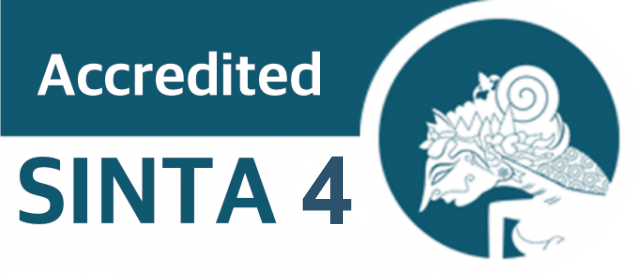Development of Scratch-Based Srikandi Media for Indonesian Cultural Heritage in Elementary School: A Preliminary Study
DOI:
10.29303/jpm.v20i2.8426Published:
2025-03-12Issue:
Vol. 20 No. 2 (2025)Keywords:
ADDIE; Indonesian Culture; Learning Media, ScratchArticles
Downloads
How to Cite
Downloads
Metrics
Abstract
This research aims to develop Scratch-based learning media called SRIKANDI on IPAS material for grade IV elementary school, especially Chapter 6, "Indonesia Cultural Heritage". This media is designed to increase student motivation, engagement and understanding of the material through an interactive technology approach. The research used the Research and Development (R&D) method with a model of ADDIE (Analysis, Design, Development, Implementation, Evaluation). This research is limited only to the analysis stage. The data collection techniques are questionnaires, observations, interviews and relevant literature studies. The population in this study is SD 4 Gulang. The participants in this study were 21 fourth-grade students and teachers. Data were analyzed using descriptive analysis. The results of this study showed that the learning media used are still limited to handbooks and worksheets, and the use of interactive multimedia is only limited to PowerPoint. Hence, it is necessary to develop interactive multimedia on IPAS material, especially Indonesia’s Cultural Heritage material, that suits the needs of students to achieve learning objectives. Based on this, it can be concluded that interactive multimedia with a contextual approach needs to be developed in IPAS subjects. Based on this, it can be concluded that interactive multimedia with a contextual approach needs to be developed in IPAS subjects.
References
M. Skare and D. R. Soriano, “How globalization is changing digital technology adoption: An international perspective,” J. Innov. Knowl., vol. 6, no. 4, pp. 222–233, 2021, doi: https://doi.org/10.1016/j.jik.2021.04.001.
M. A. Mohamed Hashim, I. Tlemsani, and R. Matthews, “Higher education strategy in digital transformation,” Educ. Inf. Technol., vol. 27, no. June 2021, pp. 3171–3195, 2022, doi: 10.1007/s10639-021-10739-1.
D. Trevallion and L. C. Nischang, “The creativity revolution and 21 st century learning,” Int. J. Innov. Creat. Chang., vol. 15, no. 8, pp. 1–25, 2021, doi: https://www.ijicc.net/images/Vol_15/Iss_8/15800_Trevallion_2021_E_R.pdf%0Awww.ijicc.net.
W.-C. V. Wu, K. Manabe, M. W. Marek, and Y. Shu, “Enhancing 21st-century competencies via virtual reality digital content creation,” J. Res. Technol. Educ., vol. 55, no. 3, pp. 388–410, 2023, doi: https://doi.org/10.1080/15391523.2021.1962455.
N. Rungrangtanapol and J. Khlaisang, “Development of a Teaching Model in Virtual Learning Environment to Enhance Computational Competencies in the 21 st Century.,” Int. J. Interact. Mob. Technol., vol. 15, no. 13, 2021, doi: https://doi.org/10.3991/ijim.v15i13.21791.
N. Samoylenko, L. Zharko, and A. Glotova, “Designing Online Learning Environment: ICT Tools and Teaching Strategies.,” Athens J. Educ., vol. 9, no. 1, pp. 49–62, 2022, doi: https://doi.org/10.30958/aje.9-1-4.
A. Ali, L. C. Maniboey, R. Megawati, C. F. Djarwo, and H. Listiani, Media Pembelajaran Interaktif: Teori Komprehensif dan Pengembangan Media Pembelajaran Interaktif di Sekolah Dasar. PT. Sonpedia Publishing Indonesia, 2024.
W. Ibad, “Gamifikasi Dalam Pembelajaran Di Sekolah Dasar,” JIEES J. Islam. Educ. Elem. Sch., vol. 5, no. 1, pp. 56–64, 2024.
S. F. S. F. Lopes, J. M. de A. P. Simões, J. M. R. Lourenço, and J. C. P. de Morais, “The Flipped Classroom Optimized Through Gamification and Team-Based Learning,” Open Educ. Stud., vol. 6, no. 1, p. 20220227, 2024, doi: https://doi.org/10.1515/edu-2022-0227.
A. J. A. Husain, A. Q. Al-Shayeb, and F. S. Khazalah, “Students’achievement In A Flipped Database Management Course: The Impact Of Flow Theory Gamification Elements.,” J. Inf. Technol. Educ. Res., vol. 22, 2023, doi: https://doi.org/10.28945/5206.
M. N. Fauzi, “Problematika Guru Mengimplementasi Kurikulum Merdeka Belajar pada Pembelajaran PAI di Sekolah Dasar,” Al-Madrasah J. Ilm. Pendidik. Madrasah Ibtidaiyah, vol. 7, no. 4, pp. 1661–1674, 2023, doi: https://doi.org/10.35931/am.v7i4.2688.
M. Alenezi, “Digital learning and digital institution in higher education,” Educ. Sci., vol. 13, no. 1, p. 88, 2023, doi: https://doi.org/10.3390/educsci13010088.
N. S. Suparman and F. Irsandi, “Adapting Language Teaching Methods To Generation Y’S Learning Styles: A Study In The Context Of Modern Education,” Al-Ihda’ J. Pendidik. dan Pemikir., vol. 17, no. 2, pp. 838–848, 2022, doi: https://doi.org/10.55558/alihda.v17i2.87.
O. P. Arma, “Peran kearifan lokal dalam proses pembelajaran IPA,” in Prosiding Seminar Nasional Pendidikan Biologi, 2024, pp. 11–31.
L. A. Nugroho, “Djava Dvipa Boardgame,” Indones. J. Hist. Educ., vol. 9, no. 1, pp. 1–16, 2024, doi: https://doi.org/10.15294/ijhe.v9i1.76940.
V. Sapulette and E. M. Solissa, “Efektivitas Pembelajaran Bahasa Indonesia Berbasis Cerita Rakyat Dalam Meningkatkan Kemampuan Membaca Siswa Sekolah Dasar,” J. Rev. Pendidik. dan Pengajaran, vol. 7, no. 4, pp. 14342–14349, 2024, doi: https://doi.org/10.31004/jrpp.v7i4.33724.
M. Zaky, M. Jarnawi, P. Pahriadi, and N. Tadeko, “Penggunaan Media Augmented Reality Berbasis Kearifan Lokal Bapidok Baku bagi Guru di SMP Kecamatan Balantak dalam Upaya Memperkuat Literasi,” J. Hum. Educ., vol. 4, no. 5, pp. 930–940, 2024, doi: https://doi.org/10.31004/jh.v4i5.1614.
R. Ellis and P. D. Sampe, “Faktor-Faktor Pengambilan Keputusan Studi Lanjut Pada Siswa Sma,” Pedagog. J. Pedagog. Dan Din. Pendidik., vol. 10, no. 1, pp. 12–17, 2022, doi: https://doi.org/10.30598/pedagogikavol10issue1page12-17.
F. Hidayat and M. Nizar, “Model Addie (Analysis, Design, Development, Implementation and Evaluation) Dalam Pembelajaran Pendidikan Agama Islam,” J. Inov. Pendidik. Agama Islam, vol. 1, no. 1, pp. 28–38, 2021, doi: https://doi.org/10.15575/jipai.v1i1.11042.
R. M. Branch and R. M. Branch, “Develop,” Instr. Des. ADDIE Approach, pp. 82–131, 2009, doi: https://doi.org/10.1007/978-0-387-09506-6_4.
M. N. Mahfud and S. Sutama, “Pengelolaan pengembangan minat dan bakat anak didik di homeschooling kak seto Solo,” J. Akuntabilitas Manaj. Pendidik., vol. 9, no. 2, pp. 113–124, 2021, doi: https://doi.org/10.21831/jamp.v9i2.39408.
E. Mulyatiningsih, Metode penelitian terapan bidang pendidikan. Uny Press, 2015.
G. Tsaparlis, Kampourakis, and Constantinos, “An integrated physical-science (physics and chemistry) introduction for lower-secondary level (grade 7),” Chem. Educ. Res. Pract., vol. 1, no. 2, pp. 281–294, 2000, doi: https://doi.org/10.1039/A9RP90029B.
Z. Setiawan et al., PENDIDIKAN MULTIMEDIA: Konsep dan Aplikasi pada era revolusi industri 4.0 menuju society 5.0. PT. Sonpedia Publishing Indonesia, 2023.
F. S. Rahmadika, R. Nurfitria, Y. A. M. Tambunan, and N. Nurdiansyah, “Implications of Educational Digital Media Scratch Games in Social Sciences Learning for Primary School Student Motivation,” Elem. J. Educ. Res., vol. 2, no. 1, pp. 1–18, 2024, doi: https://doi.org/10.61166/elm.v2i1.50.
M. K. Ali and A. Hasanah, “Pengembangan Game Edukasi Interaktif Perhitungan Waris dalam Pendidikan Agama Islam Menggunakan Scratch,” Indo-MathEdu Intellectuals J., vol. 5, no. 4, pp. 4373–4386, 2024, doi: https://doi.org/10.54373/imeij.v5i4.1635.
D. Harefa, “Strengthening Mathematics and Natural Sciences Education based on The Local Wisdom of South Nias: Integration of Traditional Concepts in Modern Education,” HAGA J. Pengabdi. Kpd. Masy., vol. 3, no. 2, pp. 63–79, 2024, doi: https://doi.org/10.57094/haga.v3i2.2347.
F. Hasani, R. Wulandari, and M. D. Rabbani, “Inovasi Media Pembelajaran Digital Untuk Meningkatkan Partisipasi Aktif Siswa,” J. Ilm. Penelit. Mhs., vol. 3, no. 1, pp. 551–559, 2025, doi: https://doi.org/10.61722/jipm.v3i`1.751.
Author Biographies
Putri Alicia Salzabila, Master of Elementary Education, Muria Kudus University
Fina Fakhriah, Master of Elementary Education, Muria Kudus University
Nur Fajrie, Master of Elementary Education, Muria Kudus University
License
Copyright (c) 2025 Putri Alicia Salzabila, Fina Fakhriah, Nur Fajrie

This work is licensed under a Creative Commons Attribution 4.0 International License.
The following terms apply to authors who publish in this journal:
1. Authors retain copyright and grant the journal first publication rights, with the work simultaneously licensed under a Creative Commons Attribution License 4.0 International License (CC-BY License) that allows others to share the work with an acknowledgment of the work's authorship and first publication in this journal.
2. Authors may enter into separate, additional contractual arrangements for the non-exclusive distribution of the journal's published version of the work (e.g., posting it to an institutional repository or publishing it in a book), acknowledging its initial publication in this journal.
3. Before and during the submission process, authors are permitted and encouraged to post their work online (e.g., in institutional repositories or on their website), as this can lead to productive exchanges as well as earlier and greater citation of published work (See The Effect of Open Access).











